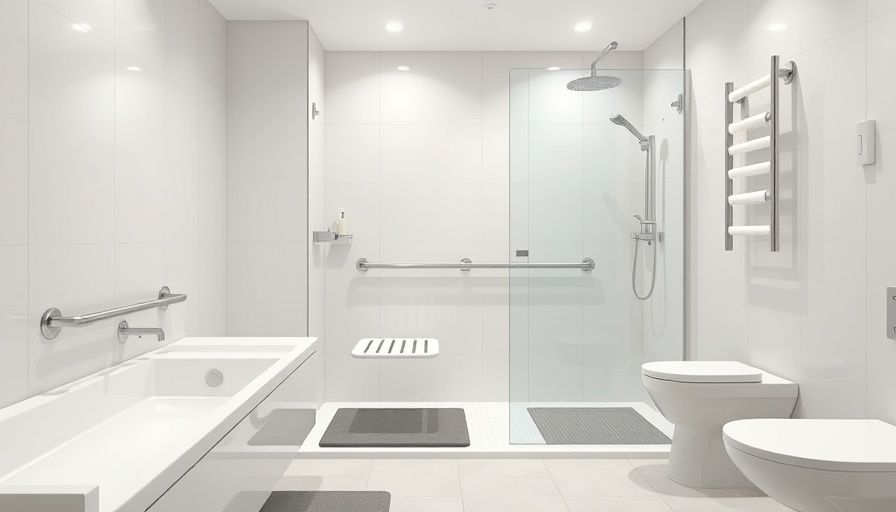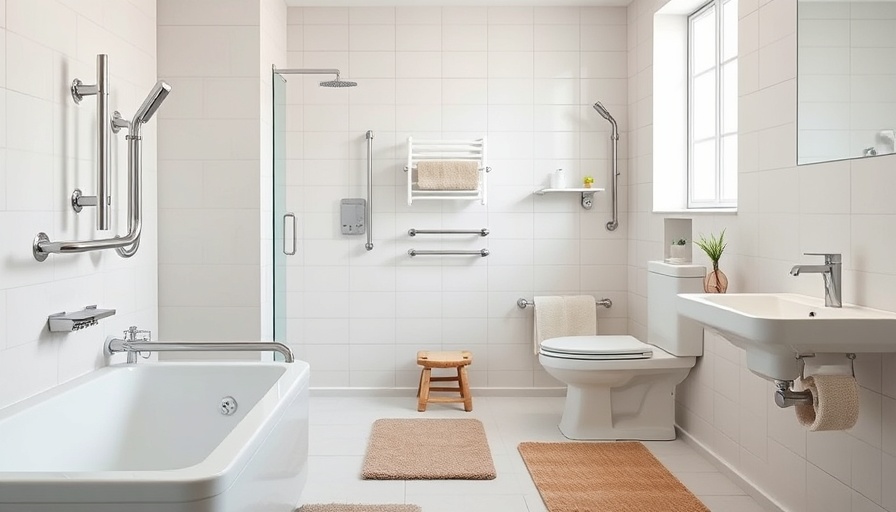
Understanding Bathroom Hazards Facing Vulnerable Individuals
As caregivers in Toms River, NJ, it’s imperative to acknowledge the unique risks present in the bathroom. A surprisingly commonplace space can become a site of danger, particularly for those over 55. The elderly and individuals with mobility issues face increased risks due to slips and falls, which are notably the leading cause of injury for seniors. Recognizing the common hazards—such as wet surfaces, poor lighting, and inadequate support structures—allows caregivers to strategize effectively to mitigate risks.
Essential Bathroom Modifications to Enhance Safety
Transforming a bathroom into a safe haven does not require extensive renovations; rather, practical modifications can drastically enhance safety. Installing grab bars near the shower, toilet, and bathtub is one of the most effective measures available. These should be securely fastened to support a person's weight, providing much-needed stability when transitioning between standing and seated positions in slippery conditions.
Additionally, non-slip mats play a crucial role in accident prevention. By placing these mats in the shower and around the bathtub, caregivers can minimize the risk of falls. Opt for mats that are designed specifically for use in wet environments, ensuring that they remain effective over time. Furthermore, consider using slip-resistant tiles or flooring for an attractive yet functional upgrade to the bathing area.
Leveraging Assistive Devices for Greater Independence
Beyond basic modifications, various assistive devices can enable elderly individuals to maintain their independence while ensuring safety. A shower chair, for instance, allows individuals to sit comfortably while bathing, significantly reducing the likelihood of slips. Look for chairs that are sturdy, adjustable, and equipped with non-slip surfaces for added security.
Moreover, toilet safety frames provide critical assistance for individuals struggling with traditional toilets. These frames elevate the seat height and add stability, facilitating easier transfers and reducing the risk of falls. Optional features like armrests can further support those with limited mobility, enhancing their bathing experience.
Lighting and Accessibility Considerations
Inadequate lighting is another prevalent issue in bathroom safety. Poor visibility can lead to missteps and falls, particularly for seniors. Strategically placed lighting fixtures can illuminate pathways leading to and within the bathroom. Installing motion-sensor lights can also be beneficial, allowing caregivers to prioritize safety without complicating nighttime navigation.
Consider the configuration of doors, as well. Outward-swinging doors can provide easier access in emergencies, allowing caregivers to respond quickly should someone fall. Ensuring that all essential items are easily reachable can also prevent unnecessary stretching or bending, which can lead to accidents.
Future Trends in Bathroom Safety
As technology advances, so does the potential for improving bathroom safety. Upcoming innovations such as smart home systems integrate automatic lighting and sensor technologies that can alert caregivers to falls or accidents via mobile notifications. These technologies not only enhance safety but can provide peace of mind for both caregivers and users.
Act Now for a Safer Tomorrow
With the understanding of bathroom safety hazards and identified solutions, caregivers in Toms River can make informed decisions to protect vulnerable loved ones. Regular assessment of home environments for such risks is essential. As safety technologies and innovations develop, integrating these solutions can foster greater independence for those we care for, ultimately leading to a more secure living space.
Call to Action: Don’t wait for an accident to happen—invest in these bathroom safety modifications today. Explore local resources to find the right products and solutions for enhancing safety and comfort in your bathroom.
 Add Row
Add Row  Add
Add 




 Add Row
Add Row  Add
Add 

Write A Comment